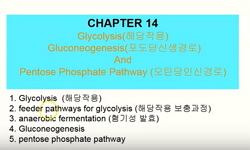Rapid development in molecular biology and recent advancement in recombinant technology increase identification and commercialization of potential protein drugs. Traditional forms of administrations for the peptide and protein drugs often rely on thei...
http://chineseinput.net/에서 pinyin(병음)방식으로 중국어를 변환할 수 있습니다.
변환된 중국어를 복사하여 사용하시면 됩니다.
- 中文 을 입력하시려면 zhongwen을 입력하시고 space를누르시면됩니다.
- 北京 을 입력하시려면 beijing을 입력하시고 space를 누르시면 됩니다.
https://www.riss.kr/link?id=A100878298
- 저자
- 발행기관
- 학술지명
- 권호사항
-
발행연도
2002
-
작성언어
English
- 주제어
-
등재정보
SCIE,SCOPUS,KCI등재
-
자료형태
학술저널
- 발행기관 URL
-
수록면
572-584(13쪽)
-
KCI 피인용횟수
77
- DOI식별코드
- 제공처
-
0
상세조회 -
0
다운로드
부가정보
다국어 초록 (Multilingual Abstract)
Rapid development in molecular biology and recent advancement in recombinant technology increase identification and commercialization of potential protein drugs. Traditional forms of administrations for the peptide and protein drugs often rely on their parenteral injection, since the bioavailability of these therapeutic agents is poor when administered nonparenterally. Tremendous efforts by numerous investigators in the world have been put to improve protein formulations and as a result, a few successful formulations have been developed including sustained-release human growth hormone. For a promising protein delivery technology, efficacy and safety are the first requirement to meet. However, these systems still require periodic injection and increase the incidence of patient compliance. The development of an oral dosage form that improves the absorption of peptide and especially protein drugs is the most desirable formulation but one of the greatest challenges in the pharmaceutical field. The major barriers to developing oral formulations for peptides and proteins are metabolic enzymes and impermeable mucosal tissues in the intestine. Furthermore, chemical and conformational instability of protein drugs is not a small issue in protein pharmaceuticals. Conventional pharmaceutical approaches to address these barriers, which have been successful with traditional organic drug molecules, have not been effective for peptide and protein formulations. It is likely that effective oral formulations for peptides and proteins will remain highly compound specific. A number of innovative oral drug delivery approaches have been recently developed, including the drug entrapment within small vesicles or their passage through the intestinal paracellular pathway. This review provides a summary of the novel approaches currently in progress in the protein oral delivery followed by factors affecting protein oral absorption.
동일학술지(권/호) 다른 논문
-
Doxorubicin Inhibits the Production of Nitric Oxide by Colorectal Cancer Cells
- The Pharmaceutical Society of Korea
- Jung, In-Duk
- 2002
- SCIE,SCOPUS,KCI등재
-
Cardiovascular Responses and Nitric Oxide Production in Cerebral Ischemic Rats
- The Pharmaceutical Society of Korea
- Shinl, Chang-Yell
- 2002
- SCIE,SCOPUS,KCI등재
-
- The Pharmaceutical Society of Korea
- Choi, Jung-Kap
- 2002
- SCIE,SCOPUS,KCI등재
-
- The Pharmaceutical Society of Korea
- Kim, Johr
- 2002
- SCIE,SCOPUS,KCI등재
분석정보
인용정보 인용지수 설명보기
학술지 이력
| 연월일 | 이력구분 | 이력상세 | 등재구분 |
|---|---|---|---|
| 2023 | 평가예정 | 해외DB학술지평가 신청대상 (해외등재 학술지 평가) | |
| 2020-01-01 | 평가 | 등재학술지 유지 (해외등재 학술지 평가) |  |
| 2010-01-01 | 평가 | 등재학술지 유지 (등재유지) |  |
| 2008-01-01 | 평가 | 등재학술지 유지 (등재유지) |  |
| 2006-01-01 | 평가 | 등재학술지 유지 (등재유지) |  |
| 2004-01-01 | 평가 | 등재학술지 유지 (등재유지) |  |
| 2001-01-01 | 평가 | 등재학술지 선정 (등재후보2차) |  |
| 1998-07-01 | 평가 | 등재후보학술지 선정 (신규평가) |  |
학술지 인용정보
| 기준연도 | WOS-KCI 통합IF(2년) | KCIF(2년) | KCIF(3년) |
|---|---|---|---|
| 2016 | 1.96 | 0.2 | 1.44 |
| KCIF(4년) | KCIF(5년) | 중심성지수(3년) | 즉시성지수 |
| 1.07 | 0.87 | 0.439 | 0.05 |






 ScienceON
ScienceON






